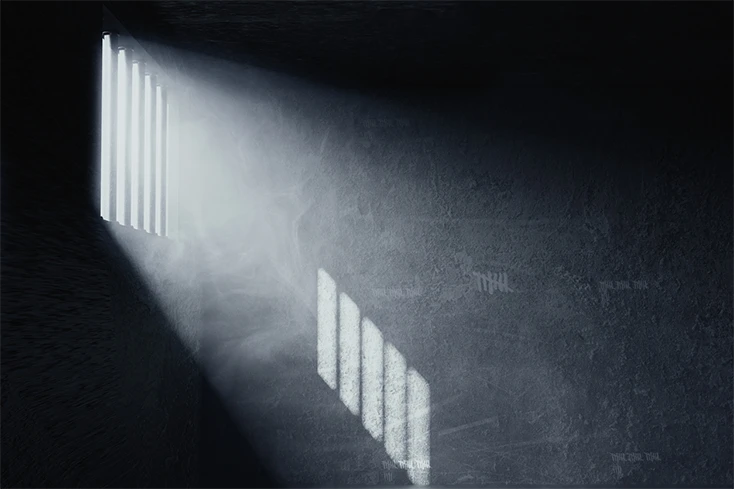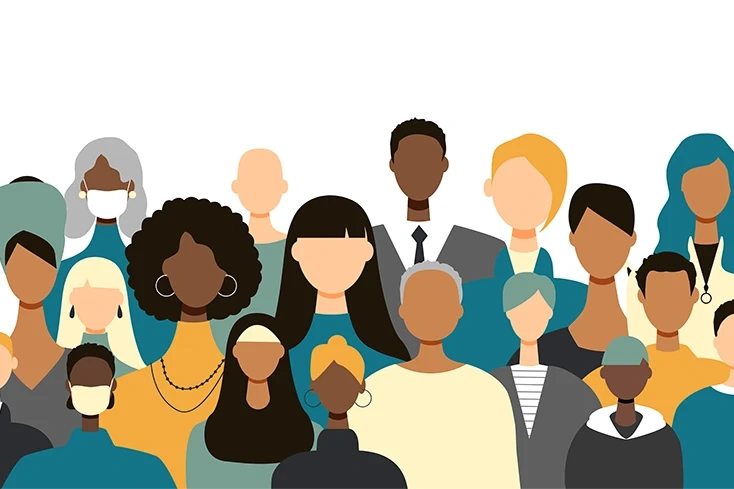If you or someone you know is struggling or in a crisis, help is available. Call, text or chat the 988 Suicide & Crisis Lifeline to reach a trained crisis counselor who can provide support in a mental health, substance use or suicide crisis. To learn how 988 can help in a crisis, read our 988 FAQs.
NAMI’s priority is to reimagine crisis response in our country — ensuring that every person in crisis, and their loved ones, deserves a humane response that connects them to appropriate and timely care. 988 is just the first step.
Too often, people with mental illness do not receive a mental health response when experiencing a mental health crisis. Instead, people in crisis often encounter law enforcement and crowded emergency departments rather than a mental health professional — often leading to tragic results. According to The Washington Post, one in five fatal police shootings since 2015 involved a person with a mental illness, and approximately 2 million times each year, someone with a mental illness is booked into jail. Millions more end up in emergency departments that are often ill-equipped to address mental health crises, often waiting hours or days to access care. We deserve better.
NAMI calls for a standard of care for crisis services in every community that includes — 24/7 call centers that answer 988 contacts locally, mobile crisis teams and crisis stabilization options — that end the cycle of ER visits, arrests, incarceration and homelessness.
What Is 988?
988 is the nationwide, three-digit number for anyone to contact to be connected to the 988 Suicide and Crisis Lifeline, and it is available via call, text or chat (988Lifeline.org). By contacting 988, a person will be connected to a trained crisis counselor and receive compassionate, accessible care when they or someone they know are experiencing mental health-related distress — whether that is thoughts of suicide, mental health or substance use crisis or any other kind of emotional distress.
Anyone can call, text or chat 988 and be connected to trained crisis counselors in the 988 Suicide and Crisis Lifeline network. This new (launched in 2022) easy-to-access number will save lives, but more work is needed to truly #ReimagineCrisis.
The goal of the 988 Suicide and Crisis Lifeline is to provide immediate crisis intervention and support. When someone contacts 988, a trained crisis counselor will answer, listen to the person, and provide support and share resources, as needed. 988 crisis counselors are trained to help in a variety of crisis situations, and no one is required to disclose any personal information to receive help.
For most people, calling, texting or chatting 988 is the intervention. Crisis counselors will be able to resolve the urgent needs of the majority of people, reducing the need for an in-person response. See our FAQs to learn more about how 988 works and what to expect when you reach out to 988.
You can reach the 988 Suicide and Crisis Lifeline by calling 988, texting 988 or chatting via Lifeline’s website.
While an easy-to-remember number is important, we need more than a number.
What Does an Ideal Crisis Response System Include?
NAMI is leading efforts to ensure everyone has access to a crisis response system that offers someone to talk to, someone to respond and a safe place for help. It will take federal, state and local action to implement this vision for crisis care in every community and ensure everyone in crisis gets the help they need, when they need it.
Advocates must educate state and federal policymakers about how our current response to crisis falls short, and how a reimagined crisis response system will help. This system should include:
- 24/7 Local Crisis Call Centers (“Someone to talk to”)
All contacts to 988 should be answered locally by staff who are well-trained and experienced in responding to a wide range of mental health, substance use and suicidal crises. Crisis call centers should be able to connect people to local services, including dispatching mobile crisis teams and scheduling follow-up appointments with local providers. - Mobile Crisis Teams (“Someone to respond”)
Mobile crisis teams should be available for people in crisis who need more support than can be offered over the phone. Staffed by mental health professionals, including peers, these teams can de-escalate crisis situations and connect a person to crisis stabilization programs or other services. Mobile crisis teams should collaborate closely with law enforcement, but only include police as co-responders in high-risk situations. - Crisis Stabilization Options (“A safe place for help”)
Some individuals in crisis will need more assistance from crisis stabilization options that provide short-term observation and stabilization. These trauma-informed programs may also identify additional treatment needs and provide a “warm hand-off” to follow-up care, from peer supports and outpatient services to more intensive services, such as hospitalization.
The National Suicide Hotline Designation Act of 2020, the law that established the 988 Suicide and Crisis Lifeline, included a provision that allows states to charge fees on cell phone bills (similar to how we fund 911) to help fund this continuum of crisis response services. NAMI State Organizations and partners across the country are working with state policymakers to implement state legislation that not only includes a fee to fund crisis services but also outlines crisis services that will be available statewide to respond to the needs of people contacting 988.
Learn more about model state legislation to build 988 crisis response services.
Want to know what your state legislators are doing to support 988 and crisis response? NAMI has an up-to-date, interactive map tracking legislation across the country.
Get Involved
Mental health advocates across the country have the power to demand a comprehensive crisis system in every community, available to every person who needs it. You can help by making legislators aware of both the problem — our inadequate crisis system — and the solution. Here are six ways you can act today:
- Sign NAMI’s petition to show your commitment to reimagining crisis response in your community.
- Share your story to power our advocacy by telling us your own crisis response or 988 experience. The real-life experiences of people who’ve encountered good or bad crisis response help policymakers understand why change is needed.
- Email your members of Congress to tell them to fund a crisis response infrastructure.
- Explore how your community can #ReimagineCrisis. Find helpful information and timely resources to use in your advocacy efforts to build a better crisis response system.
- Learn about ways to influence your state policymakers. See if there is any current legislation in your state and connect with your NAMI State Organization to learn how they are supporting legislation and how you may get involved.
- Recruit other advocates by posting on social media to demand a mental health response to mental health crises.
988 & Crisis Response Public Opinion Polling
NAMI and Ipsos have released several waves of polling that show broad support for funding 988 and building a full crisis response system.
Summer 2024 (conducted June 7-9, 2024 of 2,048 U.S. adults)
Summer 2023 (conducted June 2-11, 2023, and surveyed 2,073 U.S. adults)
Spring 2022 (conducted May 20-22, 2022, and surveyed 2,049 U.S. adults)
Fall 2021 (conducted Oct. 22–25, 2021, and surveyed 2,049 U.S. adults)
Resources to Guide Mental Health Crisis Response
- A Consensus Approach and Recommendations for the Creation of a Comprehensive Crisis Response System – Developed by fifteen leading organizations in mental health, this evidence-based toolkit offers federal and state policymakers with a guide for implementing a continuum of mental health and substance use care in Conjunction with the 988 Suicide and Crisis Lifeline.
- National Guidelines for Behavioral Health Crisis Care: Best Practice Toolkit – Published by SAMHSA, this guide helps mental health authorities, agency administrators, services providers, as well as state and local leaders, think through and develop the structure of crisis systems to meet their communities’ needs.
Resources
In The News
- The new mental health hotline is a key step, but it must be properly funded.
- 988 crisis response: A promise in peril
NAMI News
- NAMI, Grassroots Advocates Call on FCC to Improve 988 Routing to Support Local Response
- NAMI Statement on FCC Action to Improve 988 Call Routing
- NAMI Leads 40+ National Organizations to Urge Immediate Improvements to the 988 Suicide and Crisis Lifeline
- NAMI Poll Finds Public Unaware of 988 Before July Launch but Supportive of Policies to Improve Crisis Response
- NAMI Receives Innovation Award for 988 Advocacy Efforts
- NAMI Praises Mental Health Investments in President Biden’s FY 2023 Proposed Budget
- NAMI Statement on the Decision of FCC to Require Text-to-988
- As Launch of 988 Mental Health Crisis Number Looms, NAMI Poll Finds Broad Support for the System and Fees to Fund It
- NAMI Urges Swift Action to Reimagine Crisis Response Ahead of 988 Launch Next Year
- By July 2022, 9-8-8 will be the Nationwide Mental Health Crisis and Suicide Prevention Number
- FCC Designates 988 as a Nationwide Mental Health Crisis and Suicide Prevention Number




